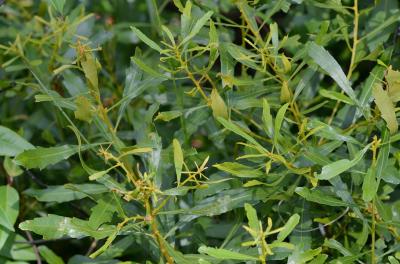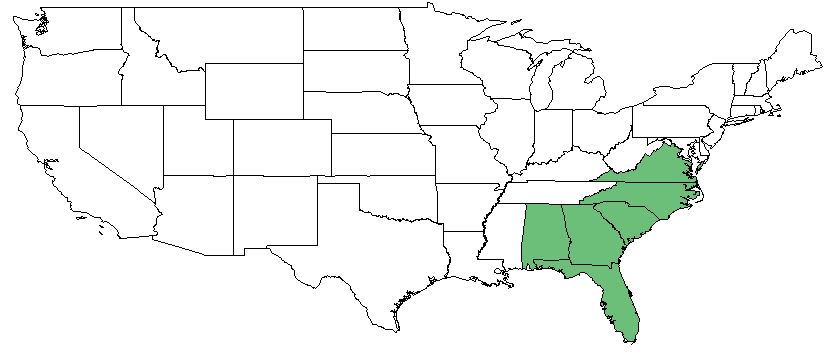Difference between revisions of "Morella pumila"
(→Taxonomic Notes) |
(→Description) |
||
| Line 24: | Line 24: | ||
==Description== | ==Description== | ||
<!-- Basic life history facts such as annual/perrenial, monoecious/dioecious, root morphology, seed type, etc. --> | <!-- Basic life history facts such as annual/perrenial, monoecious/dioecious, root morphology, seed type, etc. --> | ||
| + | ''M. pumila'' is a native perennial that varies in growth habit from an evergreen shrub and subshrub to a tree growth. It is a member of the Myricaceae family, and can grow up to 6 feet high. The species is dioecious, with aromatic leaves and root nodules that help fix nitrogen in the soil. <ref name= "USDA"> USDA Plants Database URL: https://plants.usda.gov/core/profile?symbol=MOCE2 </ref> | ||
| + | |||
==Distribution== | ==Distribution== | ||
==Ecology== | ==Ecology== | ||
Revision as of 18:20, 30 May 2018
| Morella pumila | |
|---|---|

| |
| Photo by Gary Fleming at the Digital Atlas of the Virginia Flora | |
| Scientific classification | |
| Kingdom: | Plantae |
| Division: | Magnoliophyta - Flowering plants |
| Class: | Magnoliopsida - Dicots |
| Order: | Fagales |
| Family: | Myricaceae |
| Genus: | Morella |
| Species: | M. pumila |
| Binomial name | |
| Morella pumila L. | |

| |
| Natural range of Morella pumila from Weakley [1] | |
Contents
Taxonomic Notes
Synonyms: Myrica pusilla Rafinesque, Morella cerifera (Linnaeus) Small, Myrica cerifera Linnaeus var. pumila Michaux, and Cerothamnus pumilus (Michaux) Small.
Varieties: none
Description
M. pumila is a native perennial that varies in growth habit from an evergreen shrub and subshrub to a tree growth. It is a member of the Myricaceae family, and can grow up to 6 feet high. The species is dioecious, with aromatic leaves and root nodules that help fix nitrogen in the soil. [2]
Distribution
Ecology
Habitat
Conservation and Management
Cultivation and restoration
Photo Gallery
References and notes
- ↑ Weakley, Alan S. 2015. Flora of the Southern and Mid-Atlantic States: Working Draft of 21 May 2015. University of North Carolina, Chapel Hill, North Carolina. 1320 pp.
- ↑ USDA Plants Database URL: https://plants.usda.gov/core/profile?symbol=MOCE2